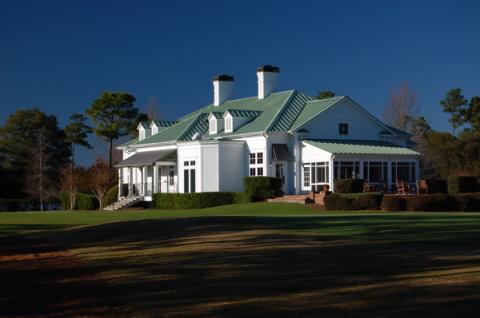Misery loves company. In Naples, FL, a microcosm for golf rich residential areas in the nation, The Naples News reported Sunday that private clubs are scrambling all over themselves to reduce initiation fees or, in some cases, eliminate them altogether. Members have departed, new members are hard to find and club owners are trying anything to staunch the flow of red ink. Initiation fee revenue is nice, but dues keep the lifeblood flowing.
Membership at the 500 hardest hit private clubs in the nation is down 29%, and others are approaching the brink. According to the 2009 Private Club Operations Report of the National Club Association, the response
Contact
This email address is being protected from spambots. You need JavaScript enabled to view it.
This email address is being protected from spambots. You need JavaScript enabled to view it. for a free one-year membership to Boxgroove.com.
to the current crisis by more than two-thirds of all private clubs the organization surveyed has been to increase membership marketing and member retention activities. But if future and current members do not believe they can afford to pay dues, won’t further promotion expenses be good money after bad? Consider also that half of all private clubs surveyed are cutting expenses and 40 percent are deferring capital improvements; such cutbacks surely will not make member retention any easier.

The Reserve at Litchfield Beach in South Carolina is a private course that Boxgroove members can play for just $75.
During sea change, adapt or drown
These responses to crisis by an industry not known for creativity are predictable, even in the face of monumental challenges. Private clubs have never had to maneuver through crisis, and many are sticking to traditional notions of exclusivity. Discussions of opening up tee times to the public are met with reactions just short of banshee screams at some clubs. The brutal fact is that the entire idea of private club membership is going through a sea change, and McRedmond Morelli thinks he has the wheel of one ship that could help private clubs survive and thrive in the choppy seas ahead.
Morelli is founder of Boxgroove.com [http://www.boxgroove.com], so named for the shape of the grooves on golfing irons that will be outlawed on the PGA tour in just a couple of weeks and for the rest of us 14 years farther down the line. In simple terms, Boxgroove opens up to anyone the tee sheets at some formerly strictly private clubs. Boxgroove members pay a small annual membership fee, currently just $49 (but free to the first dozen readers of this article; see details below) for access to all the private clubs that have signed onto Boxgroove’s growing roster of clubs. The private clubs control the times available and who can have access to their courses. The member clubs pay no out-of-pocket expense to join Boxgroove and have the opportunity to generate revenue by selling tee-time slots that would otherwise go unused by their own members.
Social networking changing the game
The private club members of Boxgroove set their own controls. For example, some clubs, in an attempt to retain an air of exclusivity, will only permit play by members of other private clubs. Some clubs will restrict play to area residents and compel them to play with a club member in the hopes that the golfer might consider joining. Clubs can even permit only players from specific other clubs, or confine outside play to one tee slot per day, or even per week.
“The site,” says Morelli, “is designed to be very respectful of the private club experience.” He adds, by way of example and wishful thinking, that if Augusta National and Pine Valley signed up for Boxgroove, they could restrict “outside” play only to members of the other club.
But it is Boxgroove’s social networking aspect that could be the landscape changer for private club play. Boxgroove members, nearly 800 strong since its debut in June and growing quickly, have access to each
As private clubs open up, Boxgroove members say “Ahhhh.”
other, and there is nothing to prohibit, say, John Jones at DeBordieu Colony (Pete Dye design) in Georgetown, SC, from inviting Bill Bowen from Wachesaw Plantation Golf Club (Tom Fazio) eight miles away in Murrells Inlet, SC, from developing a series of home and home play dates, each bringing the other as a guest. Either way, via Boxgroove or Boxgroove members connecting with each other, the clubs generate revenue not available previously. Only the most tradition-minded clubs will accuse Boxgroove of helping to “game” their system of exclusivity. The rest will appreciate the added income.
Have Boxgroove, Will Travel
Boxgroove is a special boon for traveling golfers. In the past, if I was traveling to Phoenix, AZ, for example, I might have asked my pro to call a private club there to try to arrange for me to play during my trip. Now, as a Boxgroove member, all I have to do is contact the Arizona Country Club, part of the Boxgroove roster, and book a tee time. Or if I would like to play the exclusive nearby Phoenix Country Club (not a Boxgroove member club), and I identify online another Boxgroove member who plays there, I might send him an email, introduce myself and see if he would be willing to host me as his guest. (I’ll be happy to pay for the guest fee and buy him lunch.) Boxgroove also encourages its members to form buddy groups to communicate with each other and, eventually, set up dates to play Boxgroove member courses (or, if they are members of private clubs not affiliated with Boxgroove, to swap hosting responsibilities at their own clubs).
Contemplate Boxgroove’s success and similar models that could follow, and it isn’t hard to envision how the face of private club access will
The excellent Reserve at Litchfield Beach is available for play to Boxgroove members around noon this week for just $75.
change. Since its debut in June, Boxgroove.com has signed on nearly 800 members and more than 75 private clubs. I have been taking the site for a test drive the last week and have found it easy to use and replete with some interesting golf courses, with a clickable map of the U.S. indicating where its individual members and member courses are located. You can also search by city or state. For now, most courses are located in the Midwest and Western regions where Morelli and Boxgroove have their roots but more are being added weekly.
The current $49 introductory rate -- free to the first dozen GolfCommunityReviews.com readers to sign up (see details at bottom) -- certainly seems reasonable. I note that Boxgroove recently added Boothbay Golf Club in Maine, the first New England course on the roster. Boothbay’s initiation fee is $2,500 and annual dues are $2,500, according to its web site. Because the club is closed for the season, no green fee is indicated yet, but although they can set whatever fee they want, Morelli says most clubs set their rates to approximate their unaccompanied guest fees. I’d count on Boothbay’s rate being something less than $100.
Coming soon to a private club near you?
McRedmond says he is working overtime to sign up more golf clubs, especially in such golf hotspots as the southeast. Only one club in South Carolina, for example, is currently listed, but it is a good one, The Reserve at Litchfield Beach, just south of Myrtle Beach. The Reserve posts tee times at Boxgroove for one to four players per slot, available for the next couple of days around noon at a rate of just $75, cart included. That is an excellent price for the finely conditioned Greg Norman course. Of the courses that list rates -– the majority do ask you to call the club to work out a price and time of play –- they range from $50 to $143.
Boxgroove has been aggressive and clever in its marketing, affiliating with a few state golf associations to help spread the word quickly. In announcing its arrangement with Boxgroove, the Washington State Golf Association, for example, indicated Boxgroove can “strengthen and grow membership, maximize revenue, and increase club exposure.” That certainly sounds like a win/win proposition for private clubs that are struggling to make ends meet, and for the thousands of golfers who have driven by the gates of their local private clubs and thought “if only.” With Boxgroove, they can now feel as if they “belong” to a bunch of them.
If you are interested in taking Boxgroove for a test drive, contact McRedmond Morelli at This email address is being protected from spambots. You need JavaScript enabled to view it. and tell him you read about Boxgroove at GolfCommunityReviews. He will arrange for a free one-year trial subscription to Boxgroove for the first dozen who contact him.

























